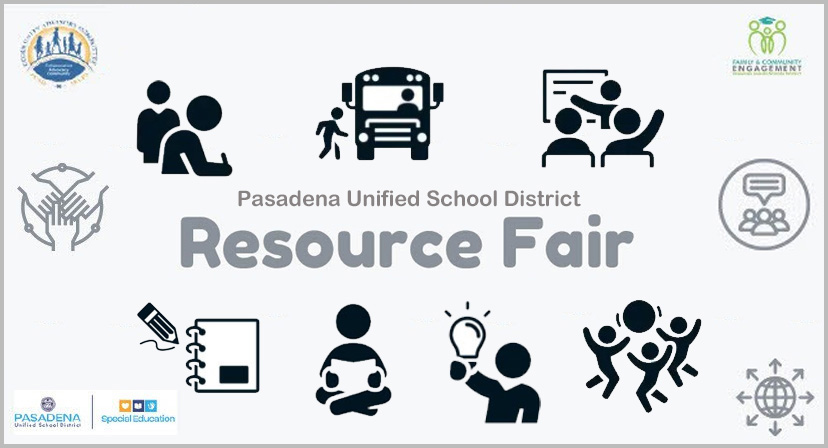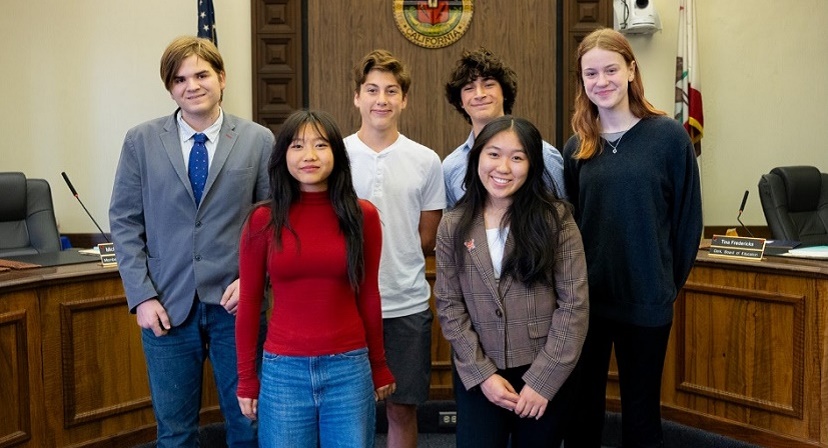Pasadena Unified’s Annual ‘State of the Schools’ Speech Delivered in Private, Emailed to Community; Details Vast Challenges to District
Pasadena Unified Board of Education President Patrick Cahalan delivered his 2020 “State of the Schools” address on-camera to an empty room earlier this week. A video and printed copy of the speech was then e-mailed to members of the PUSD community.
Cahalan opened his address by acknowledging, “These are extraordinary times.”
“The changes that our District, our State, and our country, have experienced since March,” he said, “have been unlike anything else in the last century. The focus of this State of the Schools must, therefore, be focused on our response to the coronavirus pandemic and PUSD’s role in leading our community’s return to normal times.”
The speech comes as the coronavirus pandemic presents the District with perhaps the biggest challenge in its history, even with five years of budget battles and school closures still fresh in the community’s memory.
Cahalan laid out a picture of the District having to do more with less, with uncertain State funding.
He also said social distancing measures could remain in place through 2021.
But Cahalan assured that the District remains “dedicated to our District’s adopted mission: to provide a caring, engaging, and challenging education to every child, every day.”
Cahalan pointed to the District’s “thoughtful and effective steps to meet the varying needs of our students.
“These include establishing a food distribution program for our students and their families,” he continued, “developing and implementing an innovative distance learning framework, distributing devices to elementary students, acquiring more internet wireless hot spots to help bridge the digital divide, and coordinating services with the City of Pasadena and our community partners — all while meeting the needs of our employees.”
“District administrators and staff have been doing all of this while simultaneously managing the complex logistics of changing the way we do business in virtually every way, a daunting task for one of the largest employers in the City of Pasadena,” he said.
Cahalan added that the District “has substantial challenges to overcome in order to ensure we accomplish our mission. More challenges are becoming apparent as time passes and the duration of the pandemic remains unknown.”
Many of the challenges require actions at the state or federal level, said Cahalan, as he noted those decisions “will have a profound impact on the decisions we will need to make here on the ground at PUSD.”
“Because public schools are a cornerstone of our economy and our communities and vital services are channeled through our campuses,” said Cahalan, “public schools will lead the way as we return to normal times.”
Cahalan also pointed out that the state will not be returning to any semblance of pre-pandemic normal until a vaccine is developed, tested, and widely available.
“This is a process that will require several months,” he said, “certainly in the best of circumstances well past the start date of the 2020-2021 academic year and likely not until some time in mid-to-late 2021.”
Cahalan detailed a number of shifts in the District’s basic work model, from normal business operations such as handling internal paperwork and processing paychecks to creating new ways to ensure that communications with parents reach everyone in the community, “including those with limited or no digital connectivity.
“The physical closure of the schools has dramatically changed our ability to connect with parents,” he said, “which in turn has impacted our ability to conduct parent meetings and individualized educational plans and provide services to our students who have previously relied on in-person support.
But Cahalan stressed that “Every decision and action has been guided by our mission and developed through a lens of equity.”
Cahalan also took note of what he called “the willingness and commitment of all PUSD employees to serve during the last two months.”
Cahalan said, “Our labor partners in CSEA, UTP, the Teamsters, and APSA have been struggling with changes to their working day, challenges with providing services without sufficient resources, and the same universal uncertainty and stress that all Americans are feeling during this pandemic.”
“Some of our teachers have been making changes to their working day while simultaneously dealing with uncertainties about the future,” he noted. “I am proud of the way the members of our organization have responded in these circumstances. The leadership team has been working nearly around the clock, seven days a week.”
The president also detailed some of the challenges in eventually moving from “shelter in place” to less restrictive measures in 2021.
“These are heavy lifts for state governments under present circumstances,” he said. “They will not roll out entirely all at once.”
Loosening restrictions as a school district will likely be in stages, he said, the timing of which will be outside local control and at the discretion of the State, rather than the District.
Cahalan said that the District cannot provide a set schedule detailing when it can “reasonably” provide in-person instruction, even in a physical-distancing model that reduces contact.
Moving to finances, Cahalan added grimly, “All of this comes at a time when state revenues for the present year are predicted to decline dramatically.”
As he explained, “The State of California’s yearly revenue stream is highly dependent upon income taxes, particularly capital gains taxes, which are extremely susceptible to economic downturns.
“While the state has been very proactive about putting funds aside for just this sort of rainy day,” he continued, “most of those funds are in an account that is not dedicated to education. It is unclear how much of that funding, if any, will be dedicated to education.”
Cahalan said bluntly, “If the state does little to shore up K-12 education funding, our district is likely looking at a loss of revenue in the next two years that will exceed the revenue we get from Measure J.”
In addition, he said, if California doesn’t take steps to provide some relief to local school districts for their contributions to state pension funds, cost increases for that alone, in those upcoming two years, will more than offset the last two years’ early payments the state made to the pension fund to provide relief to districts during better economic conditions.
“We are facing the possibility of not only having to do much more in the way of providing services but to do it with far less money than we had even in our last two years, where we had to make very difficult decisions regarding cuts and school closures.
Despite the mountain of challenges and obstacles the District clearly faces, Cahalan tried to be optimistic in the face of it all, saying, “These are challenging times for us all and will continue to be challenging for the foreseeable future. Rest assured that in spite of these challenges, the Board, the Superintendent, and District staff are committed to serving the children of PUSD to the best of their ability.”



















